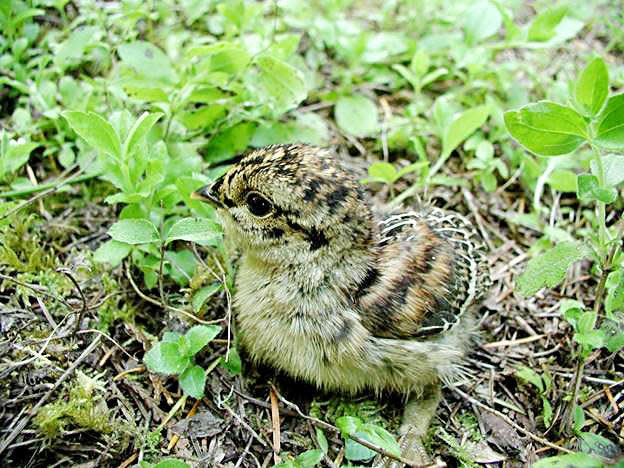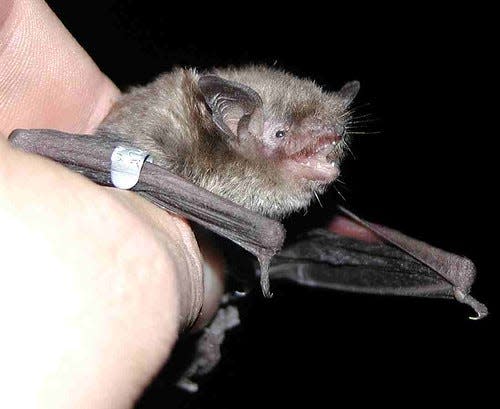Column: Preventing management of the Hoosier National Forest is bad for birds
- Oops!Something went wrong.Please try again later.
Indiana’s native bird populations are in trouble. Several species are declining, and U.S. Forest Service proposals to address the issue in the Hoosier National Forest have been met with resistance.
Most recently, federal legislation known as the Benjamin Harrison National Recreation Area and Wilderness Establishment Act (S. 2990) has been introduced by Sen. Mike Braun (R-IN) to create a wilderness designation comprising approximately 15,300 acres of disconnected sections of the Hoosier National Forest. This designation will prevent necessary management activities and further imperil native species and their habitat.

In December of 2020, the Indiana ruffed grouse was listed as state-endangered. Eighteen states currently list the ruffed grouse as a species of greatest conservation need, so Indiana represents a concerning trend. And it’s not just the grouse. Several songbird species are also endangered, including the golden-winged warbler and the cerulean warbler. On the list of Indiana’s species of greatest conservation need, several game and songbirds are listed, including the black-billed cuckoo, eastern whip-poor-will, American woodcock, northern bobwhite, and several warblers.
Concerns: Why some outdoor recreation groups oppose Sen. Braun's wilderness expansion
One thing these species all share in common is that they rely on young forest habitat, a rapidly declining habitat type not prioritized by a handful of environmental groups whose sole focus is mature forests.
In 2018, the management plan known as the “USFS Houston South Vegetation Management and Restoration Project” was introduced. As part of this plan, the Forest Service proposes vegetation management activities to improve the health of the oak-hickory ecosystems and wildlife habitat in 13,533 acres of the Hoosier National Forest, encompassing the activity center of the grouse survey route, along with 9,830 acres of non-Forest Service lands.
This area is currently dominated by mature forest, including vast non-native white pine plantations and native beech-maple stands. These mature and non-native forests create a “habitat desert” and imperil native wildlife.
Young forests were once created by natural destructive events like tornados, fires, and insect infestations that created openings in the forest canopy. For 12,000 years, Native American management of forests also promoted the growth of young forests. Such events were essential to biodiversity and the health of ecosystems as young forests are rich in insects, berries, and seeds, host hundreds of caterpillar species that are a primary food source for nesting songbirds, and they provide valuable nesting and brood cover for many species. However, due to habitat fragmentation and loss, natural disturbances no longer act with the same intensity or frequency as they used to in order to create young forests.
Along with the game and songbirds mentioned above, Indiana’s bats are also at risk if forest management activities are prevented from going forward, despite suggestions by some groups that they will harm them. The Indiana bat, the gray bat, along with five other species, are already listed as state-endangered in Indiana, and four other species are listed as species of special concern.

Indiana bats roost and colonize large dead or dying trees, but primarily oaks and hickories. Decades of forest science research shows that maples are rarely used for roosting, and there is no record of a beech tree ever being used. In the Hoosier National Forest, shade resistant beech-maple forests have taken over the native oak-hickory stands, and without forest management, the bats may no longer have a place to raise their young and hibernate.
Sen. Braun’s legislation has yet to be considered by the Senate Committee on Agriculture, Nutrition and Forestry, which it must do before advancing. In total, it would expand the Charles C. Deam Wilderness in Monroe and Brown counties to about 28,000 acres, and designate another roughly 30,000 acres of adjacent land for a proposed National Recreation Area.
The Hoosier National Forest is a gem that deserves protection, and Backcountry Hunters & Anglers often supports wilderness designations. However, in this case, such a move dismisses well-established science and would do far more harm than good for Indiana’s wildlife. We support science-based forest management that supports biodiverse ecosystems and benefits wildlife.
Backcountry Hunters & Anglers seeks to ensure North America's outdoor heritage of hunting and fishing in a natural setting, through education and work on behalf of wild public lands, waters, and wildlife. This column was submitted by the Indiana Chapter board of directors.
This article originally appeared on The Herald-Times: Column: Braun proposal to expand Hoosier is bad for native wildlife